Red River Gorge
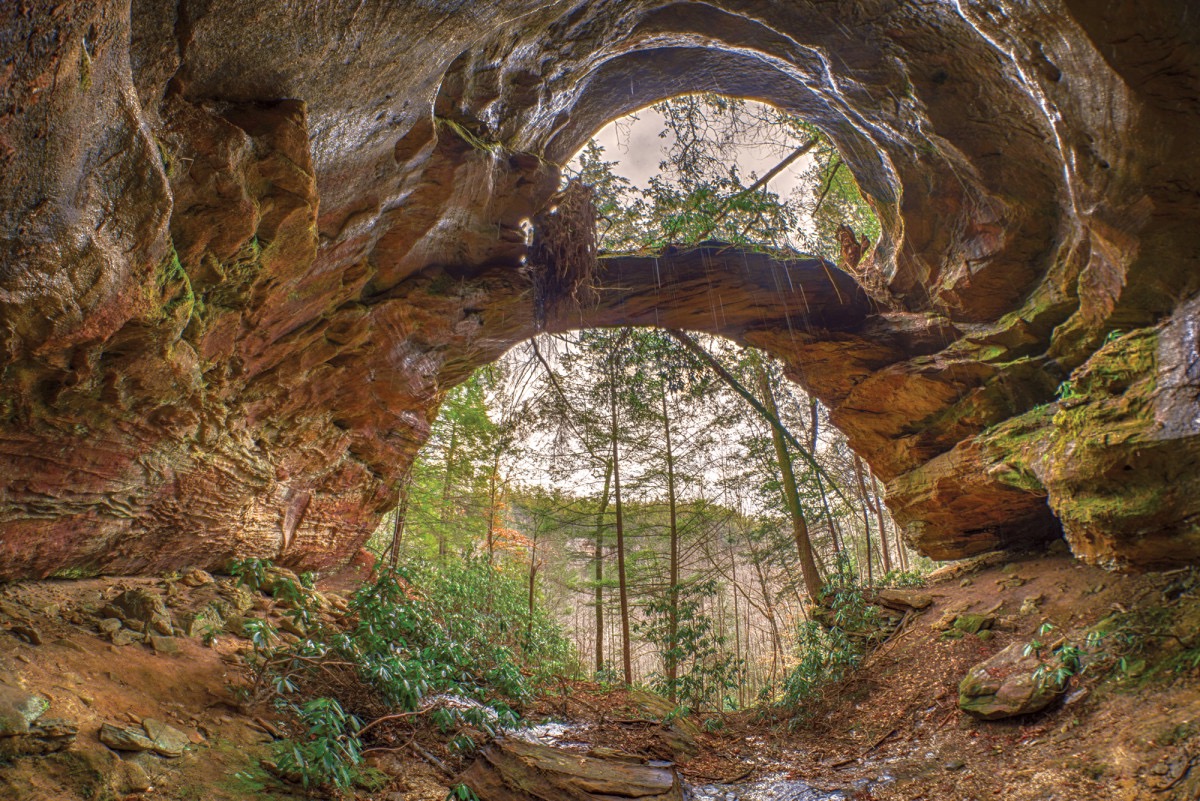
| Route 66 | Cities | Beaches |
| Shakertown |
|
Red River Gorge |
|
| Auxier Ridge | Martins Fork | Grays Arch | Rush Creek | Pinchemtight | KoomerRidge | ChimneyTopCreek | ParchedCornCreek | SwiftCampCreek |
| IndianStaircase | Castle Arch | Osborne Bend | Raven Rock | Red Byrd Arch | Indian Creek | Revenuers Ridge | Copperas Falls |
The Red River Gorge is the premier hiking, backpacking and rock climbing destination in the Upper Ohio Valley. Every weekend, crowds from Ohio, Indiana, Illinois, West Virginia and Kentucky, and every other state and many foreign countries descend on the Gorge. When it comes to hiking, the Gorge, especially when combined with adjacent Natural Bridge State Park, is a never ending destination. The core is a series of eight excellent day hikes (the top menu bar, above). These can be spliced together to create other hikes or backpacking trips of varying lengths. There are another eight day hikes on the periphery (the bottom menu bar, above), four of which are off trail and one of which follows a now abandoned road. This network of hikes is set among a unique collection of natural bridges, arches, rock formations, caves, rock shelters, deep hollows, high ridges, waterfalls, creeks, and the Red River itself. It's Disney World for Geologists. You could wander around here for a year with a camera and not run out of scenes to photograph. The Red River Gorge is outdoor Kentucky's crown jewel and its biggest problem. It is a spectacular place that is already a national recreation area and could easily be a national park. But its convenient location just off the four lane Mountain Parkway, a short drive from Lexington, Louisville and Cincinnati, invites hordes of visitors every weekend. In the words of UK biology professor Roger Barbour, "The Gorge is in danger of being loved to death." The Gorge has an uneven history. Before Christ, it was inhabited by an ancient tribe now referred to by Archaeologists as the Archaics. By about the time of Christ they had been replaced by a more sophisticated tribe known as the Woodlands. Then, for a thousand years or so, the Adena people inhabited the cliffs and rock shelters, farming the bottoms and fishing and hunting the area. They prospered, and archaelogists are still wondering why they left. The Gorge stood empty for for 200 years. When White frontiersmen reached Kentucky, the Shawnee had moved in. Daniel Boone spent his first Kentucky winter at the head of Martins Fork in 1769-70 |
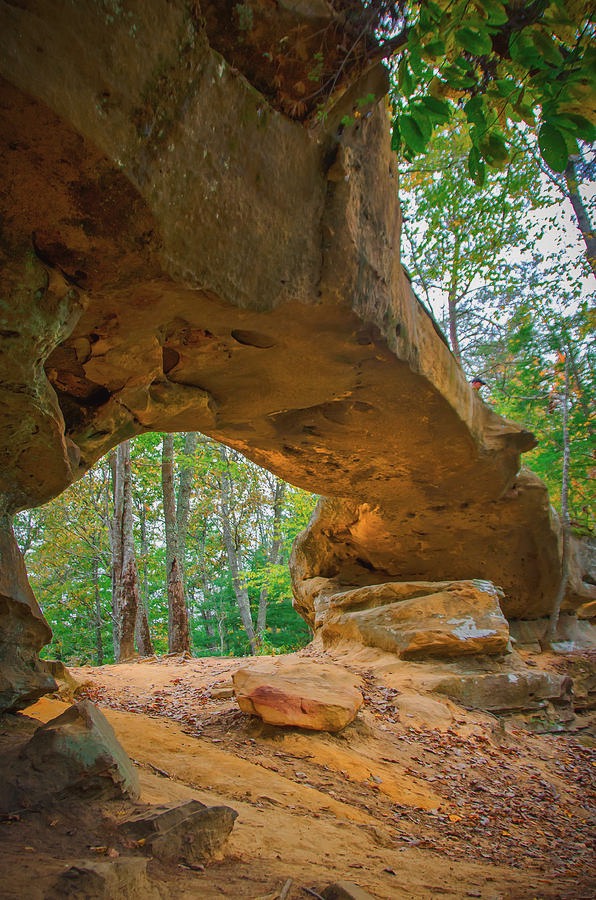 |
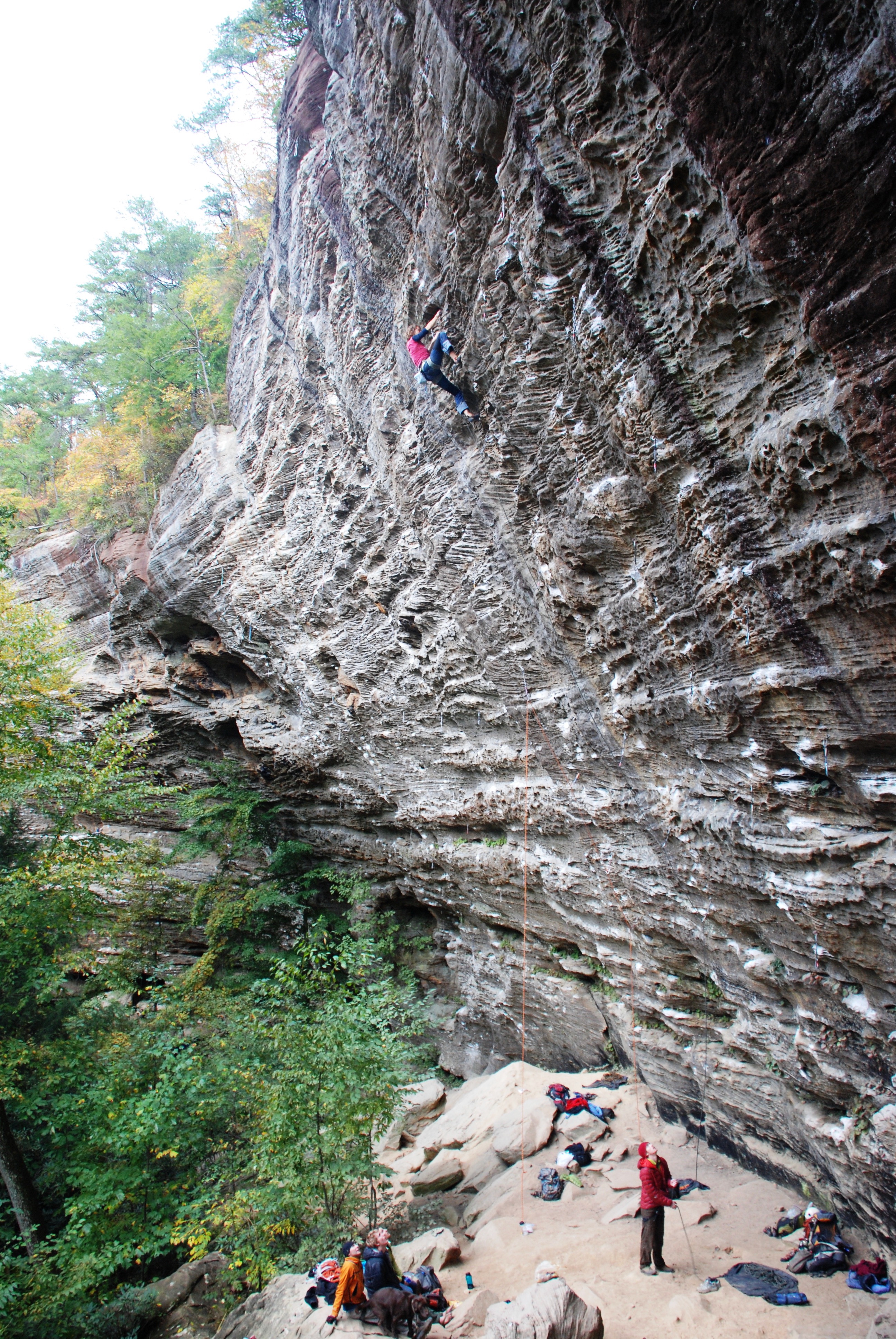 |
White men extracted nitre (used in gunpowder), then iron, and finally silver, from the Gorge during the 1700s and 1800s. Then from 1880-2020 they laid railroad tracks in and engaged in full scale timbering of the huge trees. They drilled a tunnel through Martins Ridge (now called Tunnel Ridge) and laid a railroad track in (photo, below). Remains of splash dams, log flumes, camps, roads and railbeds can still be seen by the sharpsighted. Once the trees were gone, the rails were torn up and the place abandoned to subsistence farmers, trappers and moonshiners. So the Gorge became a classic pocket of Appalachia, accessible only by difficult trails or a long, winding badly rutted mud road following the river up from Stanton. For most of a century trees grew back and the streams cleansed themselves. In the 1950s, the floor of the old railroad tunnel was paved and hunters began entering the Gorge. By 1960, the Gorge had been rediscovered by backpackers, canoeists, and fishermen willing to make the long trek in for the isolation and beauty. University botanists discovered a hundred rare plants and oil prospectors probed the plateaus. In 1966 the Army Corps of Engineers proposed a dam across the Red River which would have inundated the whole place except for a few fingers of land. Somehow a statewide movement sprang into action to stop the dam. Save The Gorge bumper stickers appeared everywhere. Groups of people began protesting in Frankfort and Washington. Sports Illustrated wrote a cover story on the controversy. The New York Times and Washington Post did major features. Finally the Corps of Engineers abandoned the project, but all the publicity drew hikers from everywhere to see this place for themselves. And they've come in increasing numbrrs for 50 years. What keeps them coming is an extravaganza. The Red River Gorge has more natural arches than anyplace else in the world except Arches National Park in Utah. Rock climbers consider the cliffs here among the nation's finest. Amateur archaeologists and lovers of Native American history can wander around for weeks exploring the caves and rock shelters used by Native Americans. Botanists come for the Ferns, Mosses and Fungi. Zoologists come for the Darters, Lizards, Salamanders, Birds and Mammals. |
Petroglyphs mark the walls, hominy holes pock the floors, and arrowheads and shaped stones are collected by the sharp eyed. Canoeists relax on the Red River all summer, but in the Spring and after heavy rains, the Upper Red is one of America's great whitewater paddling runs. (But it has claimed quite a few lives and hundreds of damaged kayaks and canoes. The iconic symbol of the Upper Red is a canoe wrapped around a tree. Do not attempt it unless you are very experienced with technical white water.) Red Tailed Hawks and Turkey Vultures circle in the sky, lazily riding rising thermal currents. Rare plants grow down in the ravines. Fossils can be collected along the sandstone cliffs. The Clifty Wilderness and Calaboose Trailless Area invite experienced backwoodsmen to head out on their own. Campers can lay awake at night and listen to wildcats and black bear prowling around. Many lunch stops and campsites border streams with nice swimming holes. |
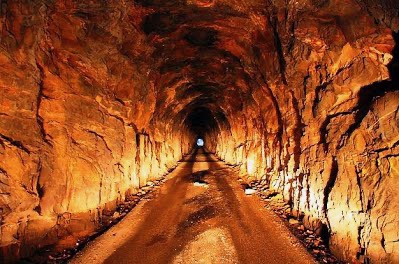 |
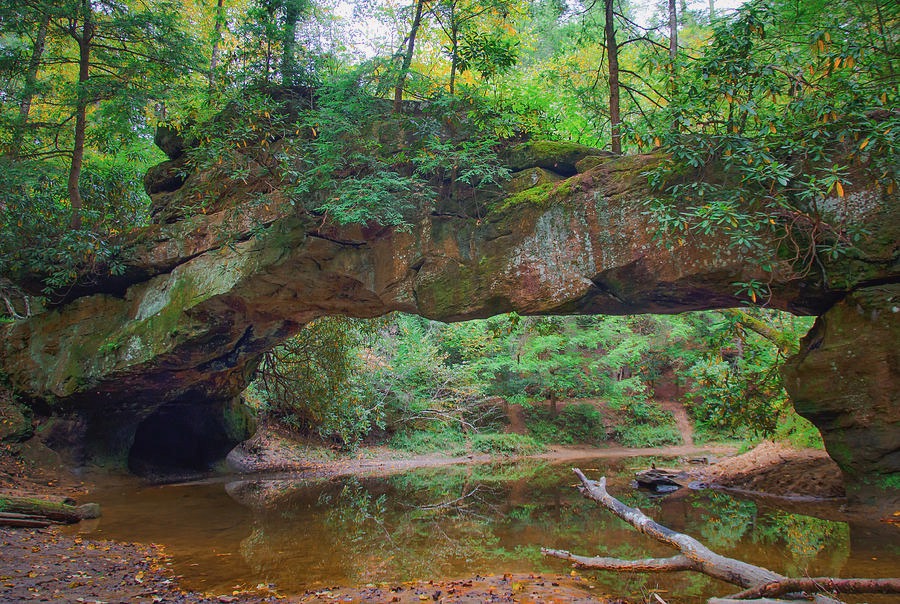 |
Spring and Fall offer one of the nation's greatest woodland wildflower shows, especially with White and Pink Ladyslipper, five species of Goldenrod, the nation's largest Ironweed and Joe Pye Weed, Boneset, and over a dozen species of Ferns and Mosses. . Photographers can spend a roll of film on one place, as the sun moving across the sky reflects differently at different angles and brings out different colors in the same cliff face or rock formation. The Gorge is also part of a larger area, all within the Daniel Boone National Forest. which offers additional pursuits. The Sheltowee Trace, a long distance trail extending from Tennessee to Ohio, cuts across the Gorge. Natural Bridge State Park, adjacent to the Gorge boundary to the South, contains not only the magnificent Natural Bridge, but numerous trails, formations, a campground, cabins, lodge and fine restaurant. Just east of the state park is Via Ferrata, with its own cabins, lodge and extensive network of steps, cables and swinging bridges providing access to a series of cliffs. |
Within the Gorge are Koomer Ridge, Pumpkin Hollow and Riverside Campgrounds and clusters of rental cabins along Martins Fork and Rock Bridge Road. But get there early Friday. Those sites fill up. If you want a cabin, you need to reserve it a month ahead. They're in demand. You can drive to two spectacular sites, Sky Bridge and Chimney Top, with only short walks down paved paths. Harrison Point, Hanson's Point and Pinch Em Tight Rock can be reached on level trails. Grays Arch does require a steep descent and ascent, but can be reached in a hike of only two miles round trip. You can day hike without one, but to camp anywhere in the Gorge you need a permit. Camping in one of the rock shelters is forbidden. These are archaeological sites. Research is conducted at those locations every year. Away from the rock shelters, you're asked to camp out of sight of any trail. Rangers take these parameters seriously. They roam the trails and enforce them. |
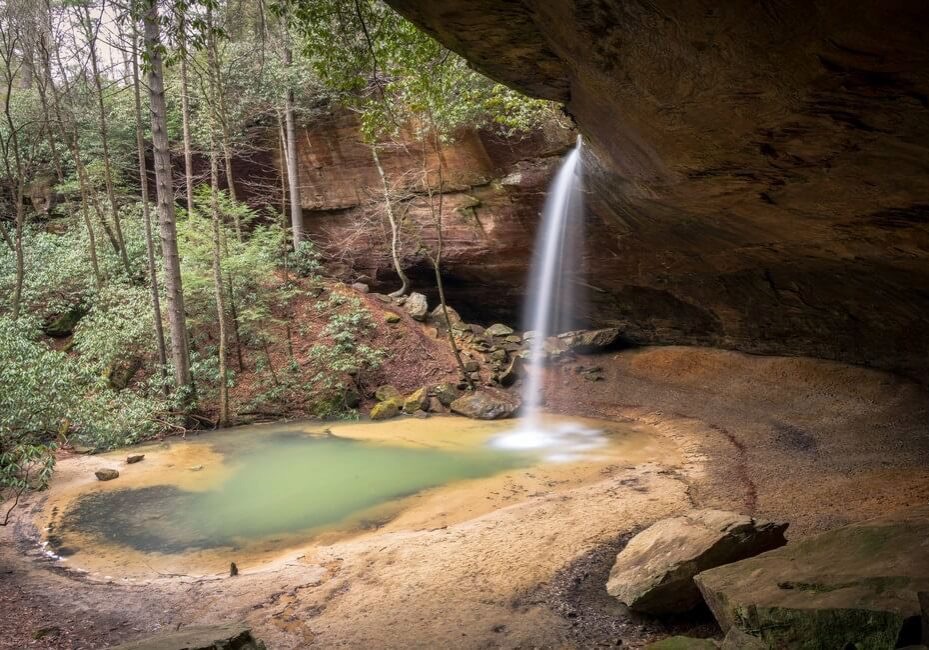 |
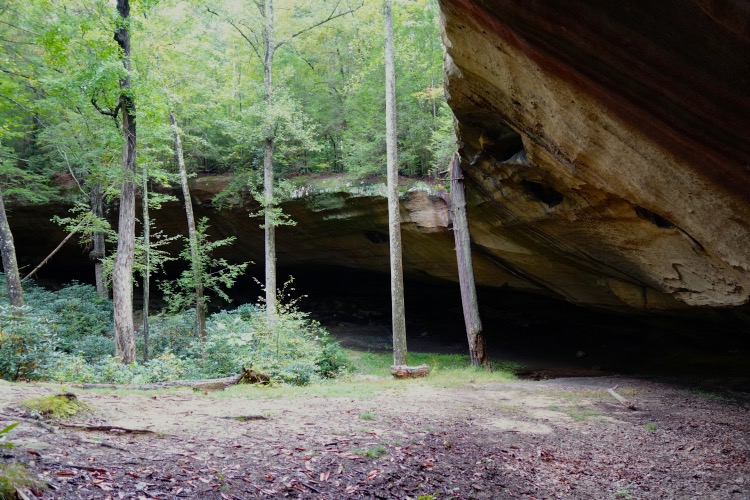 |
There are Black Bears in the Gorge. And there are Voles, Squirrels, Chipmunks, Raccoons, Possum, Porcupine and Crows. All of them want your food, and they are adept at stealing it. You must use a Bear Canister and hang your food at night if camping. Do not leave food in your pack, tent or pockets. Prepare and eat your meals away from your tents. Bring your boots inside your tent at night. Porcupines will gnaw on them to get the salt left from your perspiration. Wear long pants. Rattlesnakes and Cottonmouths live here. They are not aggressive but will attack if they feel threatened. Keep a careful eye on the trail. Do not stick your hands under logs or rocks. Snakes sun themselves on rock outcrops, arches, bridges or trails. If you see one, give it several yards of distance and you should be OK. The Gorge is low, wet and humid, ideal Mosquito and Black Fly country. The best preventative is a mosquito net jacket with hood and a tent with mosquiuto net. Check before coming to be sure the mosquito net does not have any holes in it. |
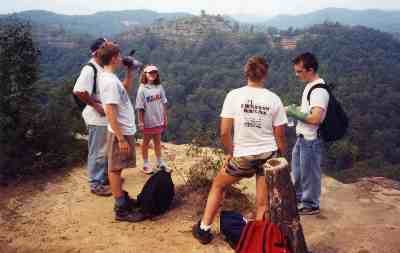 |
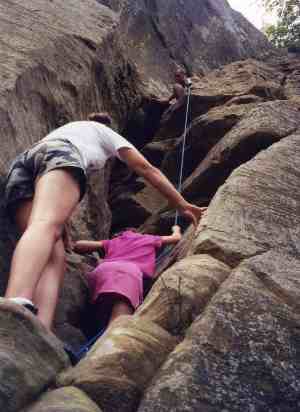 |
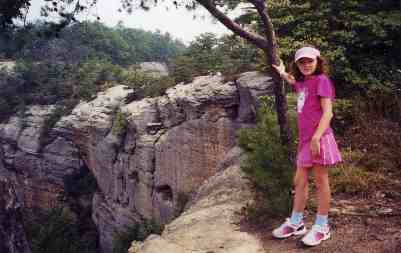 |
|
|||
|